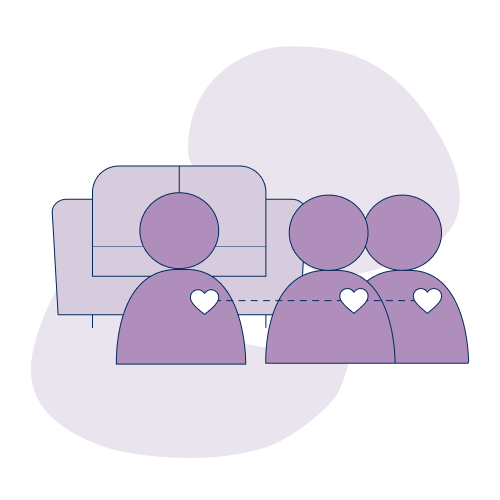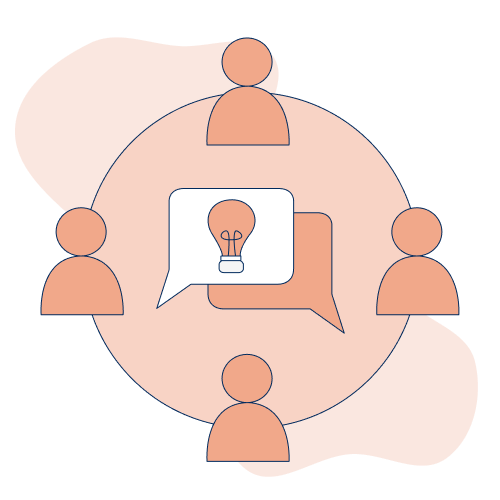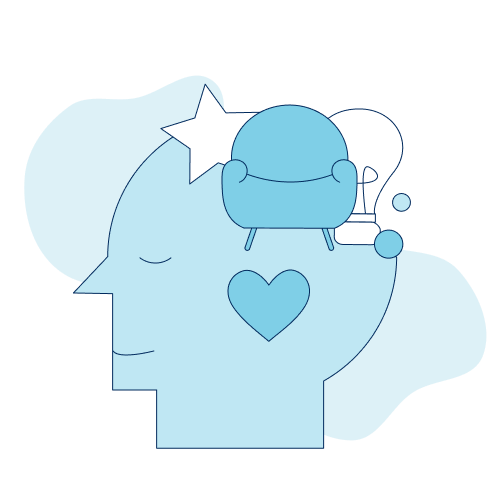When physical spaces are intentionally designed with different layouts and types of furniture, this can foster collaborative environments that meet various needs. In this blog, Jennifer shares her experiences of looking for a study space after graduation and how this exploration helped create positive change in other areas of her life. Jennifer’s personal experiences align with the classroom redesign research conducted by the Innovation Hub through Transforming the Instructional Landscape (TIL).
Jennifer Ayow, Blog Writer, Honours Bachelor of Science, Neuroscience Major, Psychology and Digital Humanities minors
Introduction
Everyone has different needs and preferences when it comes to finding a productive learning or working environment, and this might change over time depending on the context. Personally, when I graduated last June, I did not anticipate searching for study spaces in the fall because I had planned to take a gap year. However, researching graduate programs and writing applications from my bedroom began to feel isolating. Writing about myself and my experiences made me feel vulnerable, as though I was laying out my insides for others to scrutinize. I wanted nothing more than to crawl into a safe, warm cocoon, but the more I receded into my room, the lonelier I felt. Ultimately, this prompted me to return to campus in search of a less isolating place to work.
Letting My Walls Down
As an undergraduate student, I was drawn to solitary spaces like study carrels in silent libraries—little wooden boxes that kept me safely away from the world. This time, after experiencing isolation during my gap year, I started to develop a desire for interpersonal connection. Therefore, I became open to exploring a wide range of spaces with different volume levels and types of furniture.
Returning to the St. George campus, I drifted toward the libraries inside the older colleges. Instead of taking my usual spot at a study carrell, I experimented with sitting at tables with other people.
It was initially awkward sharing a table with someone I did not know because there was something strangely intimate about it. However, this turned into a sense of positive peer pressure from seeing students deeply engrossed in their work. Even though we were working on different tasks, I felt connected in our collective struggle to complete our work.
Following that experience, I stepped further out of my comfort zone by visiting a student lounge. At the student lounge, I sat in an area with couches positioned around a coffee table. The atmosphere was lively but laid-back, with students coming in and out of the kitchen area, eating lunch and socializing. To my surprise, I enjoyed doing some light reading and research in this environment. It was as if the open spaces around me reflected my internal openness to change.
A Space for Encounter and Transformation
Around this time, I started attending Writer’s Circles at the Innovation Hub. This was a scary endeavor because writing has always been a private, solitary pursuit for me. Each week, I nervously brought an imperfect, unfinished idea to the table. I braced myself for harsh criticism, but it never came. Instead, I received helpful, thoughtful suggestions and encouragement.
By participating in Writer’s Circles, I encountered ideas I would not have come up with alone in my room. In addition, I became more comfortable sharing my rough ideas and writing from a personal perspective. Much of this was to the credit of our blog editors, who were attentive to my needs and helped facilitate a safe environment.
Simultaneously, I felt that the tables in the space acted as an interface—a tool that brought us together and shaped our interactions. At the Innovation Hub, the tables are hexagonal-shaped. In contrast to a rectangular table, all sides are equilateral; no position at the table conveys more authority than the other. This made me feel like I was collaborating with my peers rather than being subjected to the judgment of an authoritative figure.
Overall, finding an environment where my goals and needs were supported helped me feel more comfortable connecting with others and sharing my ideas.
Exploring Spaces for Personal Growth
People are complex and dynamic. We are constantly changing and, subsequently, our needs can change too. For me, reflecting on how my needs changed and seeking supportive, collaborative environments gave me the courage to make positive changes in other areas of my life.
Through my personal experiences, I discovered a correlation between physical design choices, interpersonal connections, and my emotional well-being. These observations are echoed in research conducted by the Innovation Hub for a classroom redesign project, Transforming the Instructional Landscape (TIL). The iHub found that accessibility, physical comfort, interpersonal connection, and acknowledgment of emotional stakes worked together in tandem to create inclusive, supportive learning environments.
Considering the close relationship between physical spaces and emotional experiences, I would encourage readers to find a space that works for their personal needs and goals. These needs might relate to productivity, such as needing a comfortable place to work or a desire to gain motivation from others. However, beyond supporting productivity, physical structures create feelings and experiences. Readers are also encouraged to find spaces where the atmosphere supports their emotional well-being, places that help them feel inspired or at peace. Lastly, while addressing their own needs, readers are also encouraged to consider what they can do to make a space feel more inclusive for others.
References
Allworth, J., Feinig N., Lum D., Baillargeon D., Liao Z (J), Menendez R, Junnarkar S., & Corlett K. (2019). Transforming the Instructional Landscape themes and insights: Design thinking summary. Innovation Hub. http://blogs.studentlife.utoronto.ca/innovationhub/files/2019/05/InnovationHubACE_April2019NotCombined.pdf





0 comments on “Fostering Connection and Change Through Furniture”